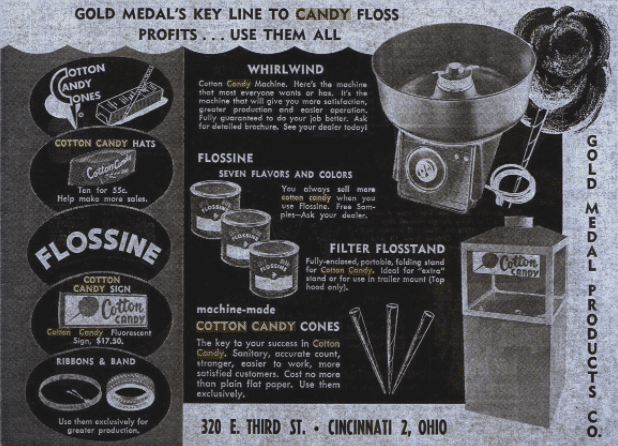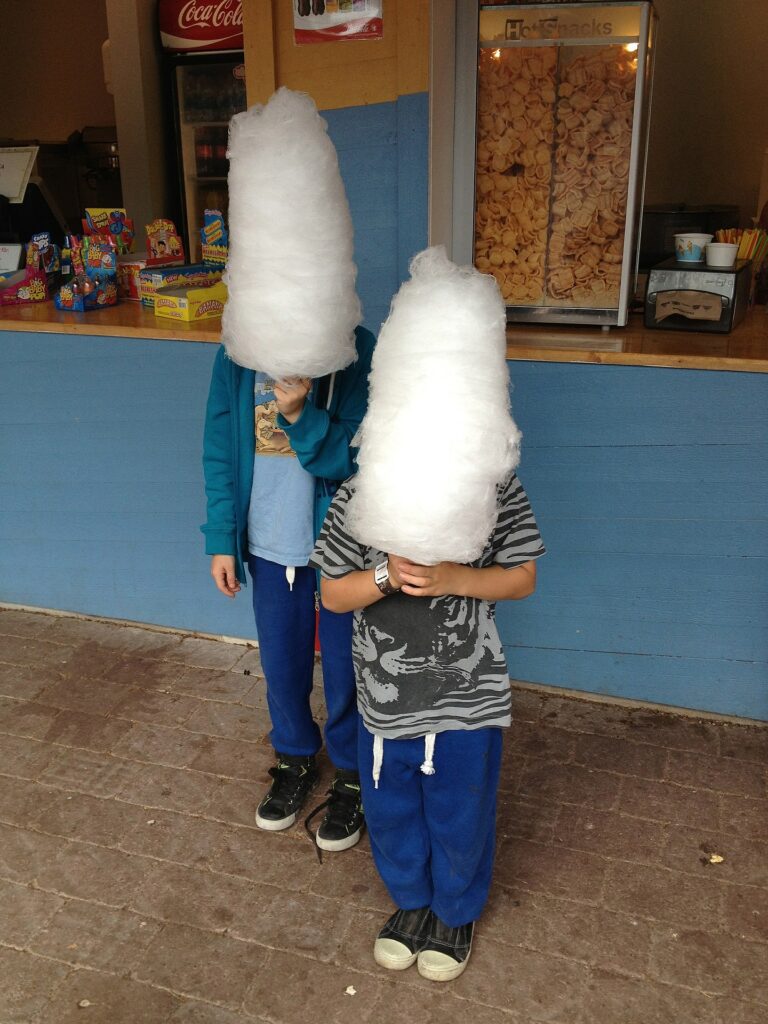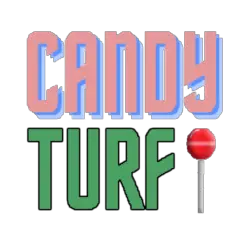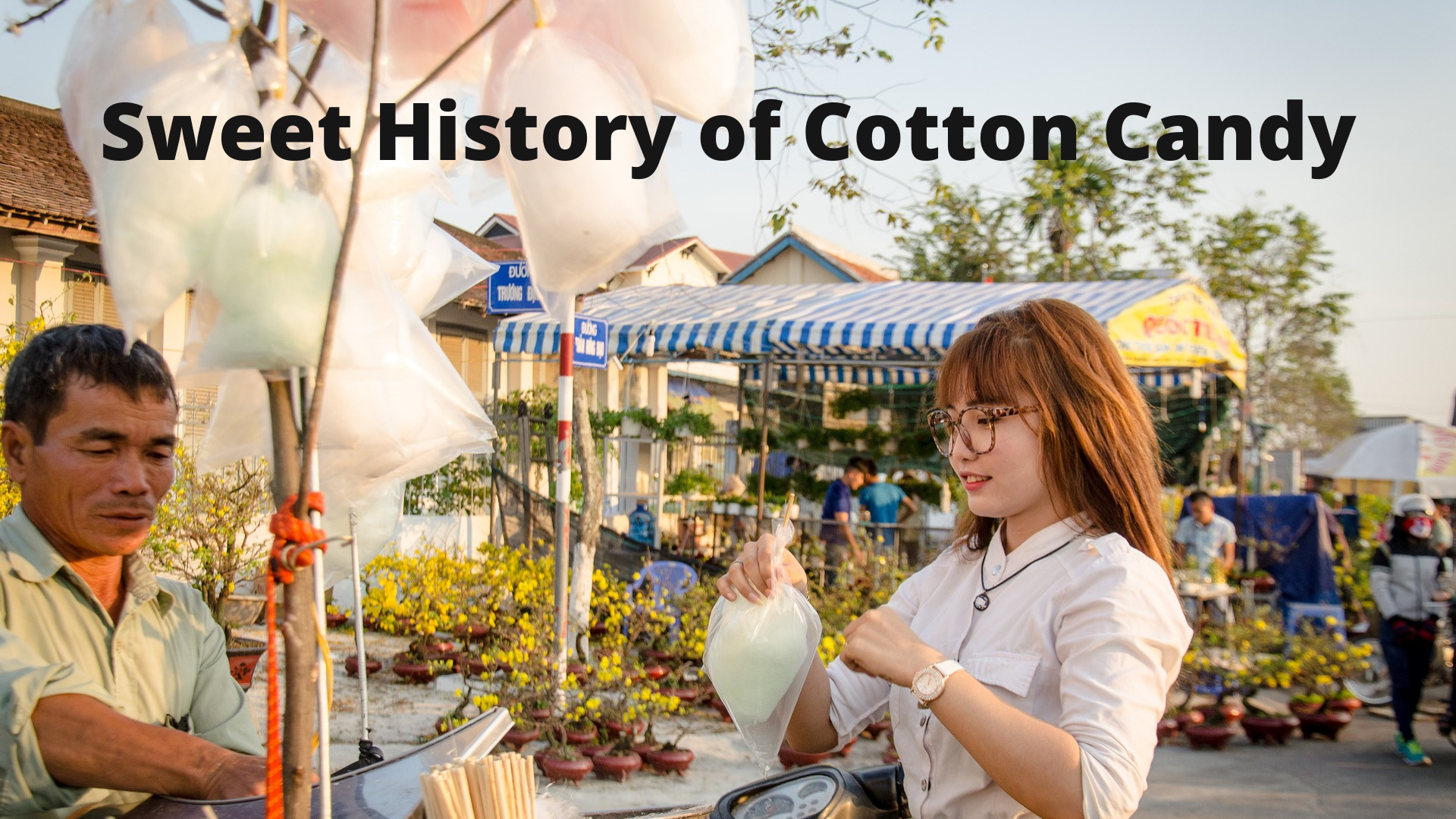Who invented cotton candy or “fairy floss”?
“Fairy floss” otherwise popularly known as cotton candy, was invented in 1897 by the dentist/inventor, William Morrison, and candy maker John C. Wharton. They initially dubbed the candy “fairy floss” because of the peculiar texture of the spun sugar.
Carnivals and fairs wouldn’t be the same without the extremely sweet cotton candy. Whether it comes in pink or blue, there’s something nostalgic about pulling off a piece of the fluff and having it melt in your mouth.
It really is a strange treat, and you have to wonder how cotton candy was conceptualized or how it’s grown to such popularity.
The history of cotton candy has seen a lot of evolution over the last hundred years. With cotton candy being a popular treat nowadays, let’s dive into the humble history of cotton candy.
Why is cotton candy called “Fairy Floss”?
In 1897, William Morrison, a dentist from Nashville, Tennessee, filed a patent for the first cotton candy machine. He worked alongside a candy maker, John Wharton, to build the first machines, which proved unreliable at best. They often broke down or didn’t work as smoothly as they should. The cotton candy produced was then called “Fairy Floss” because the strands of spun sugar are so thin.
Did you know? Dr. Morrison was not a 1-trick pony! He also developed a lard substitute made from cottonseed oil and formulated a chemical process to filter and clean public drinking water in Nashville.
While it seems odd that a dentist and a candy maker would come together to create a cavity-inducing treat, cotton candy really doesn’t contain as much sugar as you would think. It’s primarily made up of air and has far less sugar than other fairground snacks.
By 1904, the two collaborators had perfected a cotton candy machine that debuted at the St. Louis World’s Fair. The fair hosted more than nineteen million people to show off the latest science, medicine, and culture technologies – including new types of foods – which enticed curious visitors.
How much was Fairy Floss sold for at the World’s Fair?
At the World’s Fair in 1904, Morrison and Wharton sold their “fairy floss” at 25 cents apiece. With the ticket price to the fair being 50 cents, that was a steep price.
The profit margins? Tremendous.
Sugar was only a few cents per pound. Imagine that? Each serving of Fairy Floss costs this dynamic duo fractions of a penny.
But people loved it, and by the end of the fair, they had sold more than 68,000 pieces of fairy floss.
Selling cotton candy made Morrison and Wharton over a whopping $17,000 and cemented their confection into a tradition at fairs and carnivals. For comparison, an average dentist made $2,500 per year back then. Ah, the taste of the American dream.
Following the fair, the two creators continued selling their fairy floss in their native state, Tennessee and ran advertisements for the machine in newspapers across the country. When they marketed the product at a lower price, Americans latched onto this delicious treat known as “fairy floss.”
Cotton Candy’s Evolution
Because of patent law, anyone interested in making money from fairy floss had to purchase the machine from the two inventors. But by 1921, new competitors were legally allowed to enter the market. This was the beginning of a rapid change in cotton candy production and advancement.
Another dentist from New Orleans, Joseph Lascaux, created another model of cotton candy machine in 1921. While his design is far from the modern devices we use today, Lascaux is responsible for the new name: cotton candy.
By 1949, the company Gold Medal Products of Ohio produced a spring-loading base that preserved the machine’s longevity and allowed them to be mass-produced. This improvement made the machine more stable and reliable, which meant that more cotton candy could be produced. This gave so many people a chance at starting a high-profit margin business.

In 1951, they introduced a machine that could automatically roll the candy into a cone. And by the 1970s, cotton candy machines could be fully automated, even bagging the candy on its own.
Pre-Modern Cotton Candy
Spun sugar had existed outside of the United States since long before Morrison and Wharton thought up what we know as cotton candy. The history of cotton candy includes these pre-modern iterations, even though they’re not close to what we would recognize as cotton candy.
It’s thought that Italy has had spun-sugar desserts since the 15th century. As you can imagine, without any actual machinery to get it just right, the process was long and grueling. Because it took so much time and was expensive to make, it wasn’t enjoyed as often. Nowadays, cotton candy can be found at most grocery stores or even made at home.
How to make cotton candy without a machine?
One way to create cotton candy without a machine is to manually hand-pull some corn syrup coated in corn starch. The process involves creating a loop of hardened, flavored corn syrup that is continuously pulled apart and folded against itself.
As it sounds, this process is quite grueling and the end-product does not taste even close to freshly spun cotton candy.
The Popularity of Cotton Candy
Today, cotton candy can come from a large machine at a carnival or sporting event, or you can have a small domestic machine for cotton candy on demand. It’s a simple, sweet indulgence that is increasingly popular. Not only are there commercial-level cotton candy machines available to the general public, but also miniature and more compact versions exist for kids!
Back in 1904 at the World’s Fair, “fairy floss” was white and unflavored. Gold Medal Products introduced the iconic pink and blue versions – pink vanilla and their original blue raspberry flavor. Today, you can find more flavors and colors than ever before, and cotton candy makers are likely to keep introducing more flavors for candy lovers to enjoy.
Final Thoughts
Whether you call it “fairy floss” or cotton candy, the spun-sugar treat is now a staple at large events. Morrison, a dentist, took what is usually a dentist’s nightmare – sugar – and turned it into a snack with less sugar than a bottle of Coke. So the next time you get blue raspberry cotton candy, you now know that it is dentist-approved.



![How to Coat Gummy Candy in Sugar [Without Melting]](https://candyturf.com/wp-content/uploads/2022/10/how-to-coat-gummy-candy.jpg)
